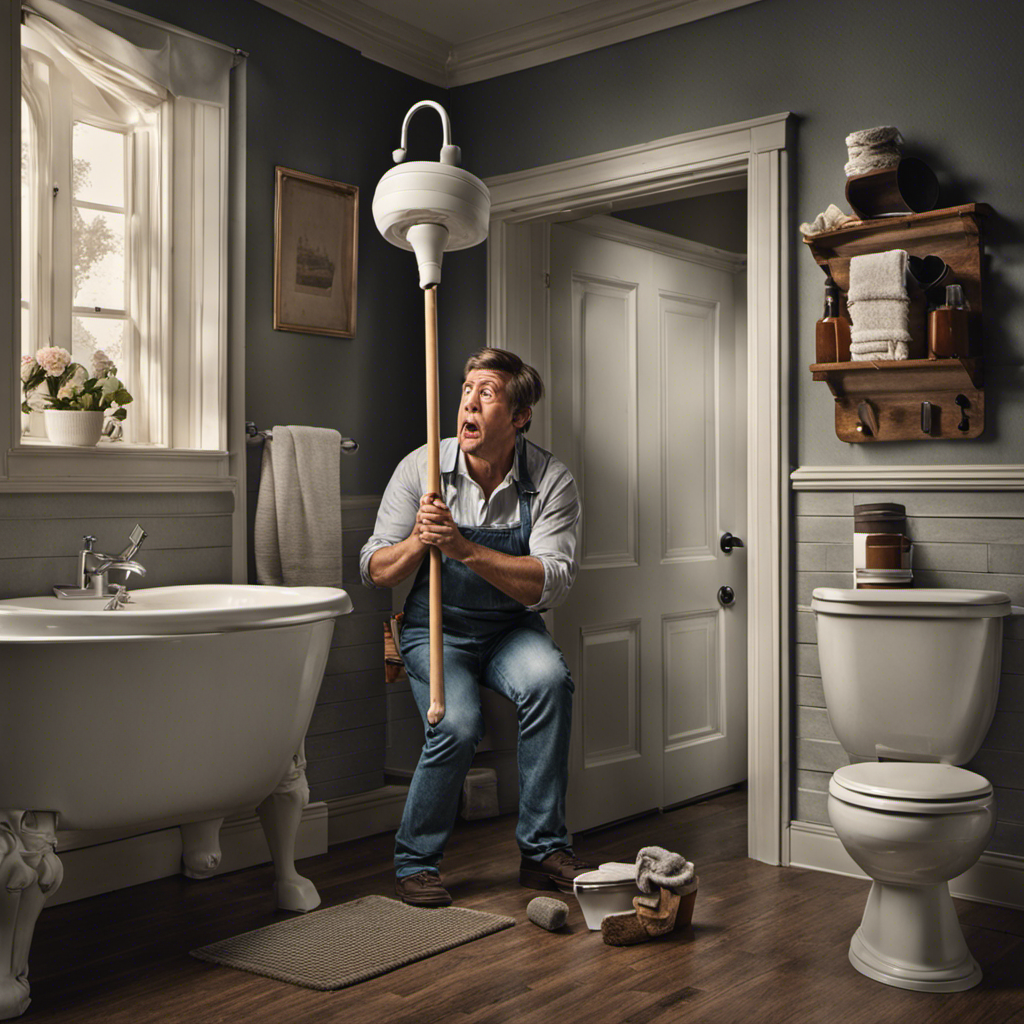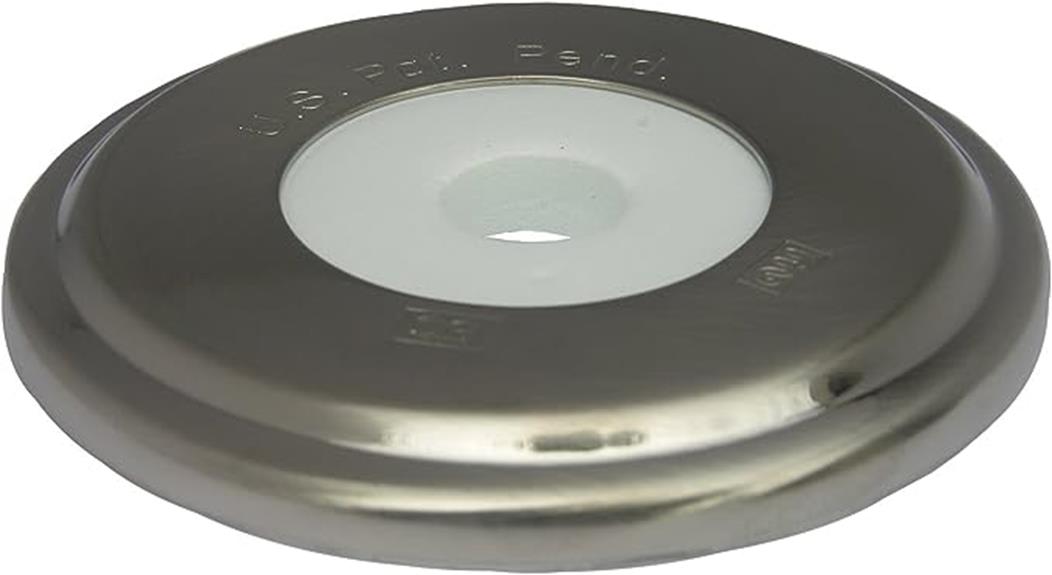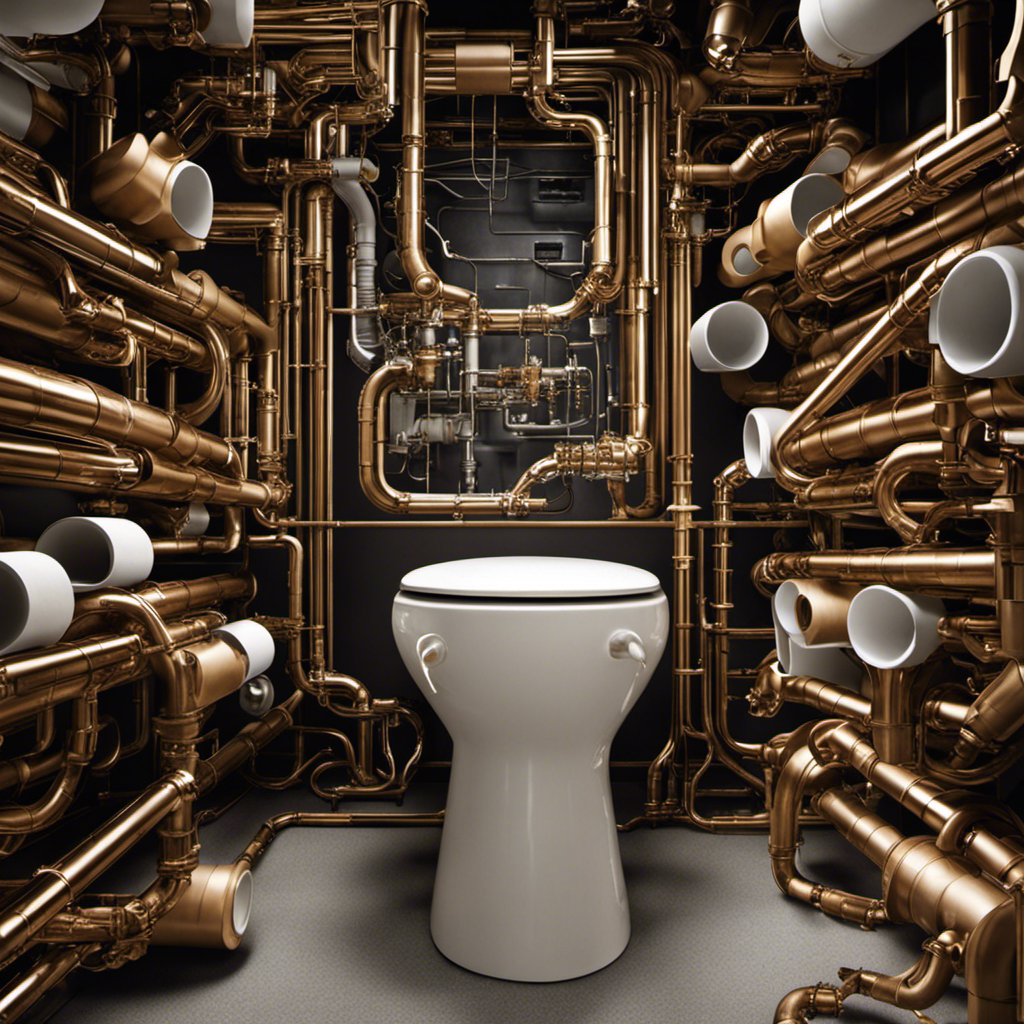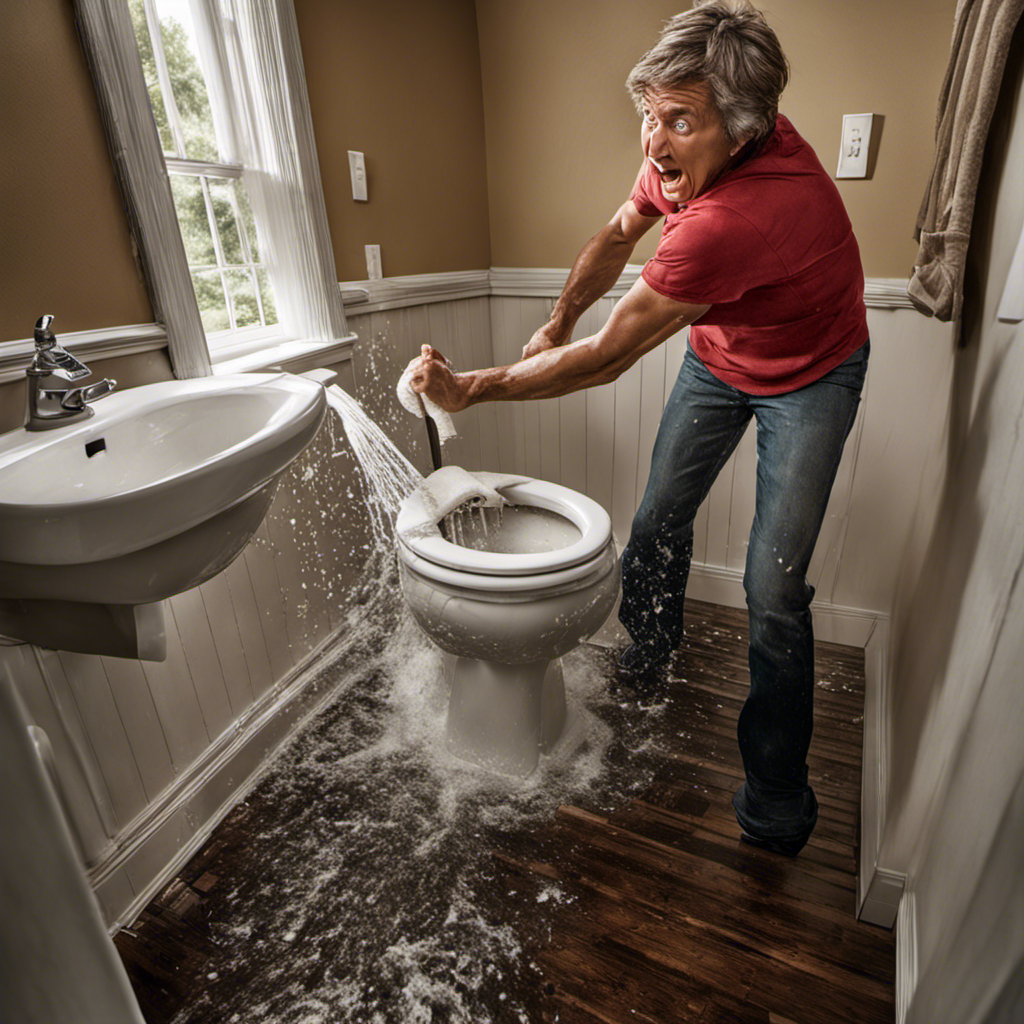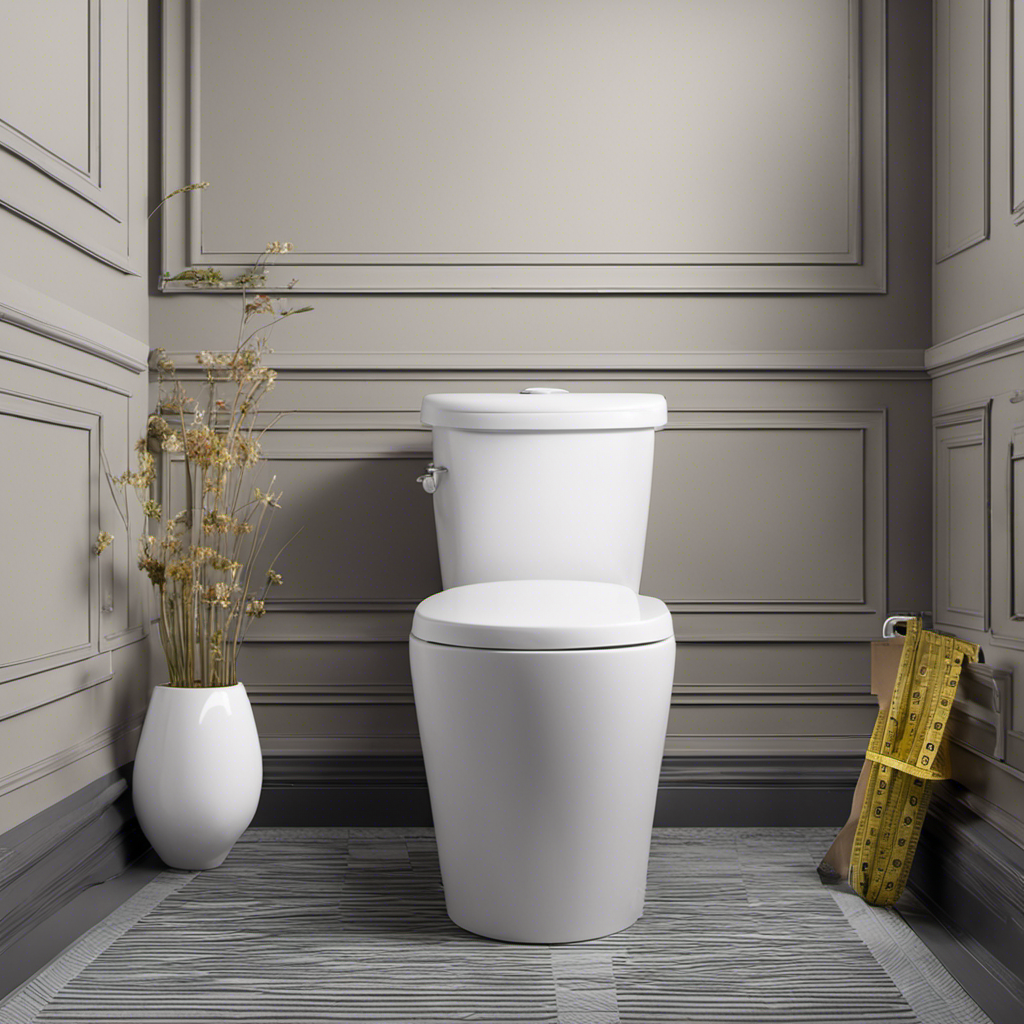Having a toilet that won’t flush can be a real pain in the neck. But don’t throw in the towel just yet! In this article, we’ll show you exactly what to do to solve this pesky problem.
First, we’ll guide you through checking the water supply and clearing any blockages.
Then, we’ll teach you how to adjust the flush mechanism and inspect the toilet tank.
And if all else fails, we’ll even tell you when it’s time to seek professional help.
So roll up your sleeves and get ready to conquer that stubborn toilet!
Key Takeaways
- Check the water supply and ensure there is enough water in the tank.
- Clear any blockages by using a plunger, toilet auger, or hot water and dish soap mixture.
- Adjust the flush mechanism by troubleshooting common issues and seeking professional help if needed.
- Inspect the toilet tank for leaks, cracks, and mineral deposits, and replace faulty components if necessary.
Checking the Water Supply
First, you’ll want to make sure that there’s enough water in the tank. If your toilet won’t flush, it could be due to low water levels. One of the common causes for this issue is a faulty fill valve. To troubleshoot this, lift the lid of the toilet tank and check if the water level is below the fill line. If it is, the fill valve may need to be adjusted or replaced.
Another possible cause is a clogged water supply line. To check for this, turn off the water supply valve located behind the toilet and disconnect the supply line. Run water through the line to clear any blockages.
If these troubleshooting tips don’t solve the problem, it may be best to call a professional plumber for further assistance.
Clearing Any Blockages
To clear any blockages, start by using a plunger. This is a common and effective DIY method for unclogging a toilet. Here’s what you need to do:
- Position the plunger over the drain hole, ensuring a tight seal.
- Push down firmly and then pull up quickly, creating suction to dislodge the blockage.
- Repeat the plunging motion several times until the water starts to drain properly.
If the plunger doesn’t work, don’t worry. There are other methods you can try to troubleshoot common toilet flushing issues. You can use a toilet auger, which is a long, flexible tool designed to reach and break up stubborn clogs.
Another option is to pour a mixture of hot water and dish soap into the toilet bowl and let it sit for a while. This can help loosen the blockage and make it easier to flush away.
If all else fails, it might be time to adjust the flush mechanism.
Adjusting the Flush Mechanism
If the plunger and other methods haven’t resolved the issue, you might want to consider adjusting the flush mechanism. Troubleshooting common flush issues can be frustrating, but understanding the inner workings of a toilet flush mechanism can help you solve the problem.
To adjust the flush mechanism, you will need to remove the toilet tank lid and locate the fill valve and float. These are usually located on the left side of the tank.
Here is a table to help you understand the different parts of the flush mechanism and their functions:
| Part | Function |
|---|---|
| Fill valve | Controls the flow of water into the tank |
| Float | Determines the water level in the tank |
| Flush valve | Releases water from the tank into the bowl |
| Flapper | Seals the flush valve to prevent water from leaking |
| Trip lever | Activates the flush mechanism |
Inspecting the Toilet Tank
When inspecting the toilet tank, you’ll want to look for any signs of leaks or cracks in the tank or the components inside. This is important because leaks can cause water wastage and damage to your bathroom floor. Here are three things to check for:
-
Replace any faulty components: Inspect the fill valve, flush valve, and flapper for any signs of wear or damage. If you notice any leaks or if the components are not functioning properly, it’s time to replace them.
-
Cleaning mineral deposits: Over time, mineral deposits can build up inside the tank, affecting the toilet’s performance. To clean these deposits, you can use a mixture of vinegar and water or a commercial toilet cleaner. Scrub the affected areas gently with a brush or sponge.
-
Check the tank bolts: Ensure that the tank bolts are properly tightened. Loose bolts can cause leaks, so tighten them if necessary.
Seeking Professional Help
Seeking professional help is a good idea if you’re unsure about how to fix the issue with your toilet. Identifying common toilet flushing problems can be challenging, and troubleshooting toilet flushing issues requires expertise. A professional plumber has the knowledge and experience to diagnose and fix the problem efficiently.
When you call a professional, they will conduct a thorough inspection to identify the root cause of the flushing problem. Whether it’s a clogged drain, a faulty flapper valve, or a malfunctioning flush handle, they will be able to pinpoint the issue and provide an effective solution.
Hiring a professional ensures that the problem is fixed correctly, preventing further damage and costly repairs down the line. They have the right tools and expertise to handle any toilet flushing issues, saving you time and frustration.
Conclusion
In conclusion, when faced with a stubborn toilet that refuses to flush, fear not! By following these simple steps, you can overcome this pesky problem.
First, check the water supply to ensure there’s enough pressure.
Then, clear any blockages that may be obstructing the flow. Don’t forget to adjust the flush mechanism if needed.
Lastly, inspect the toilet tank for any issues. Remember, if all else fails, it’s wise to seek professional help.
With these tricks up your sleeve, you’ll be able to conquer any toilet troubles with ease.
